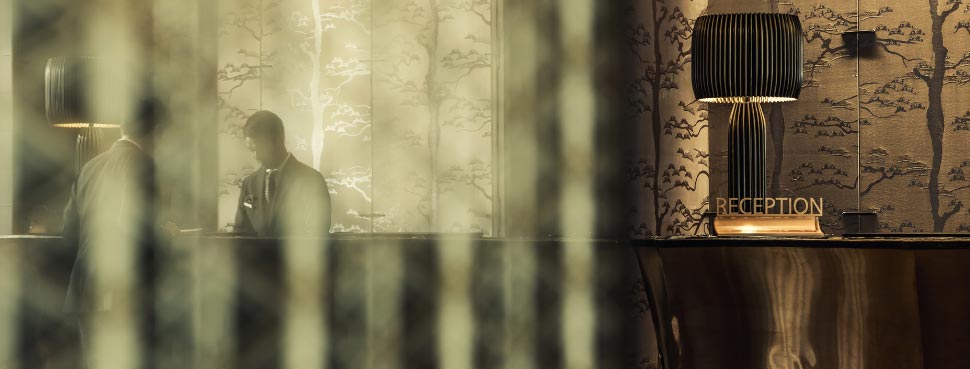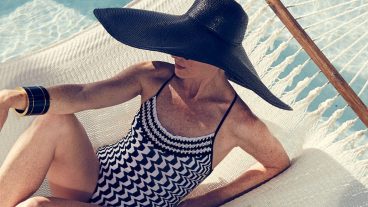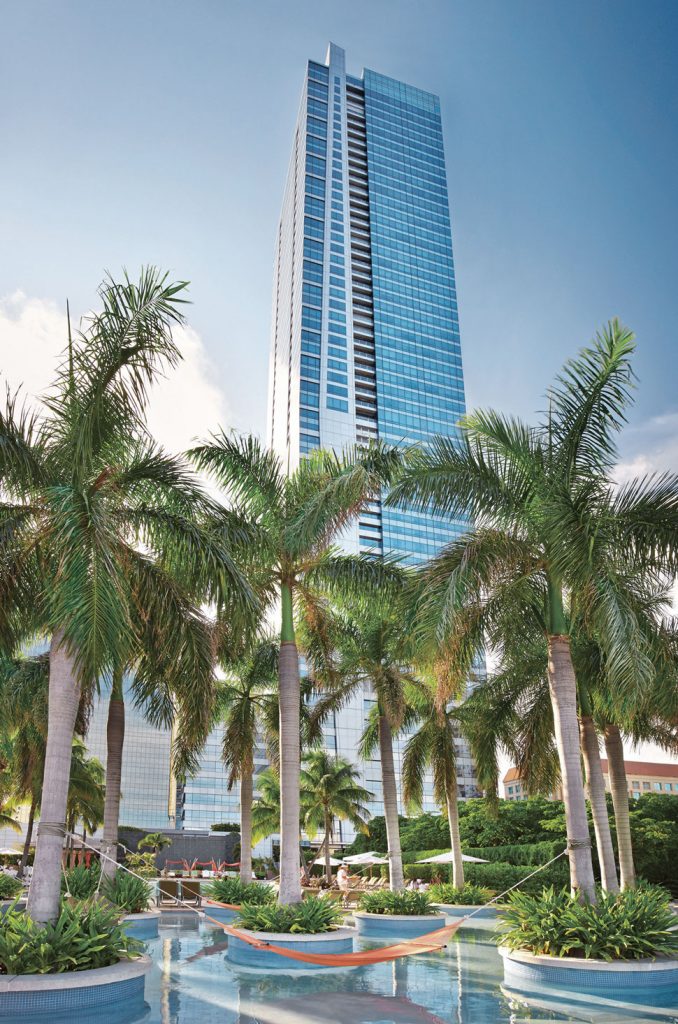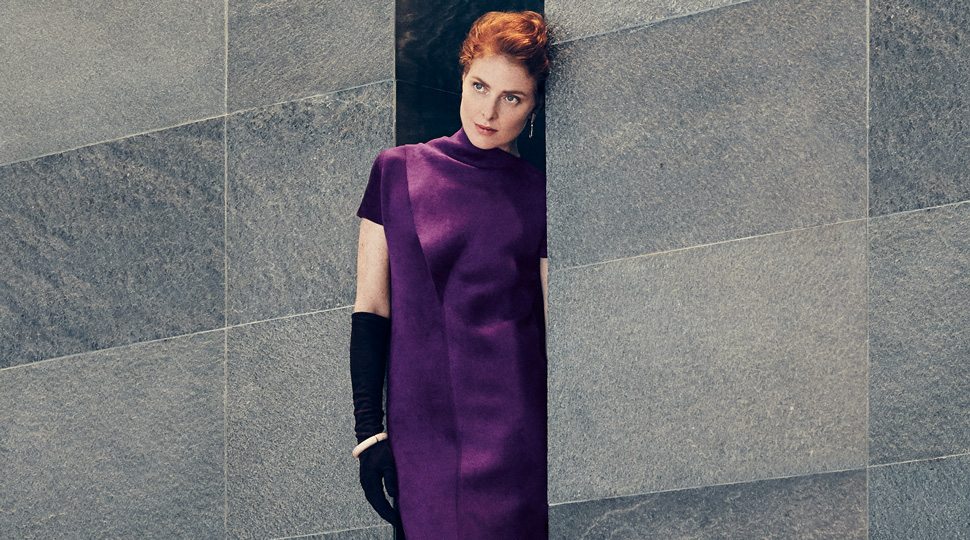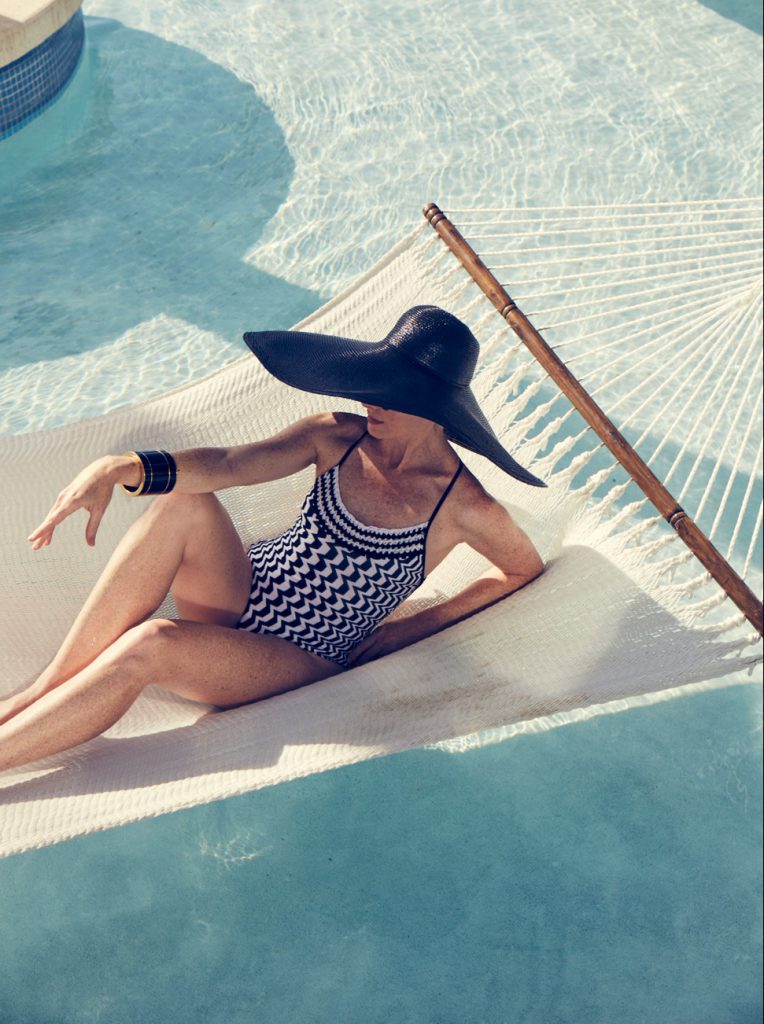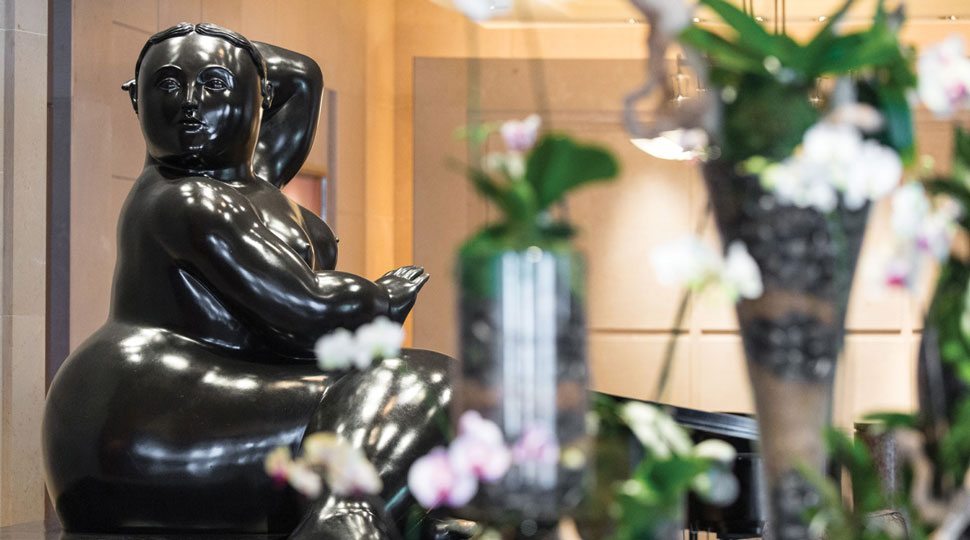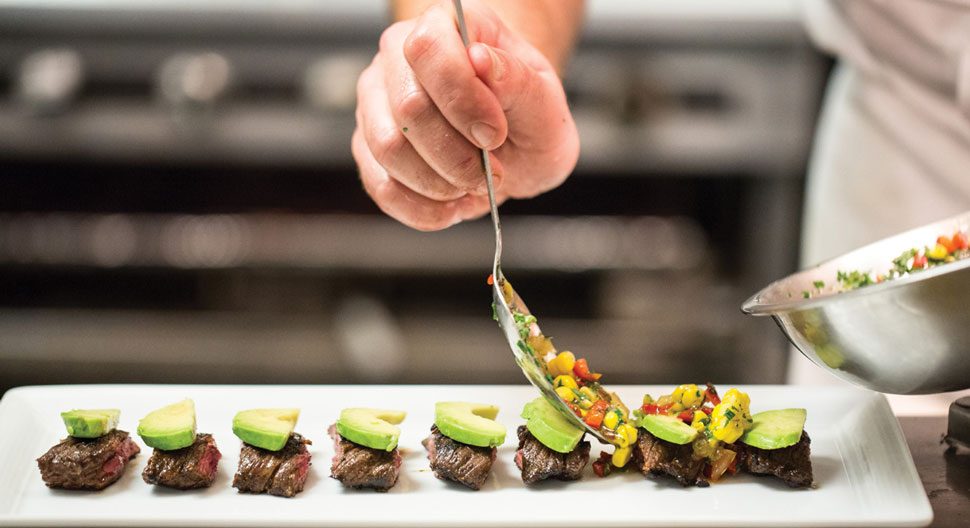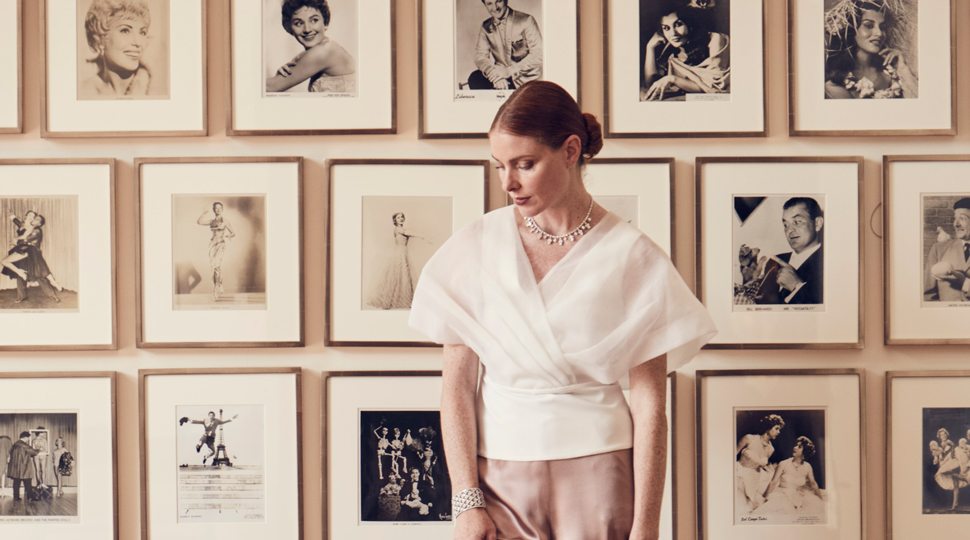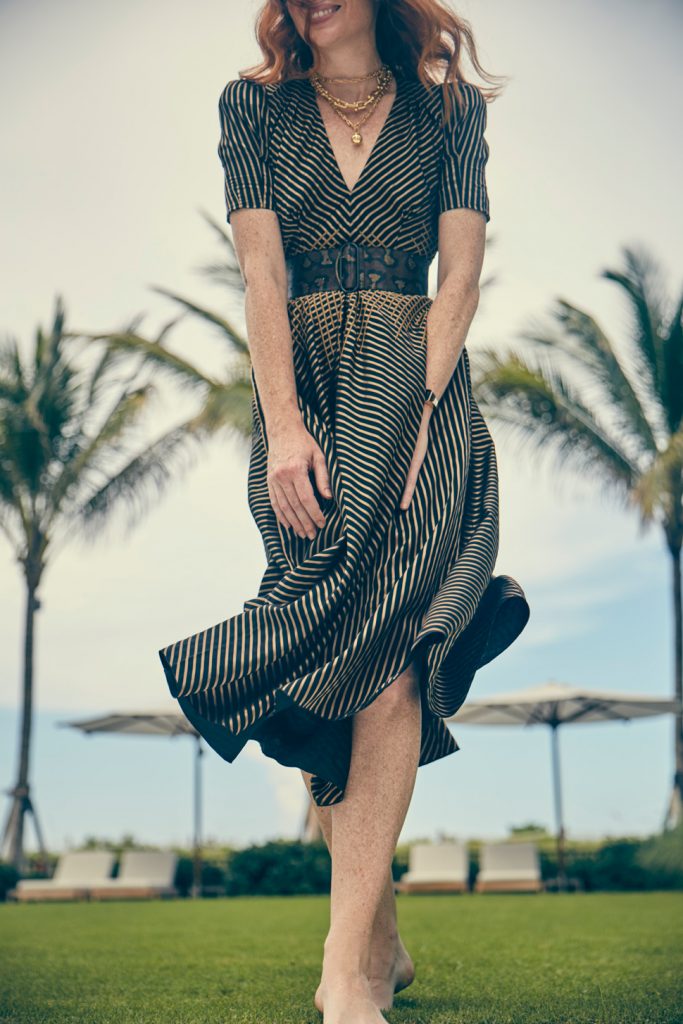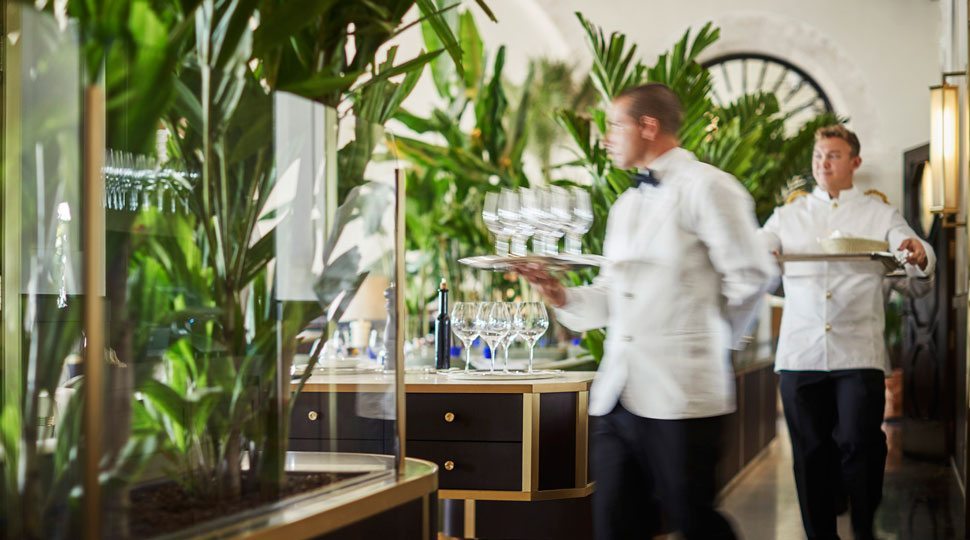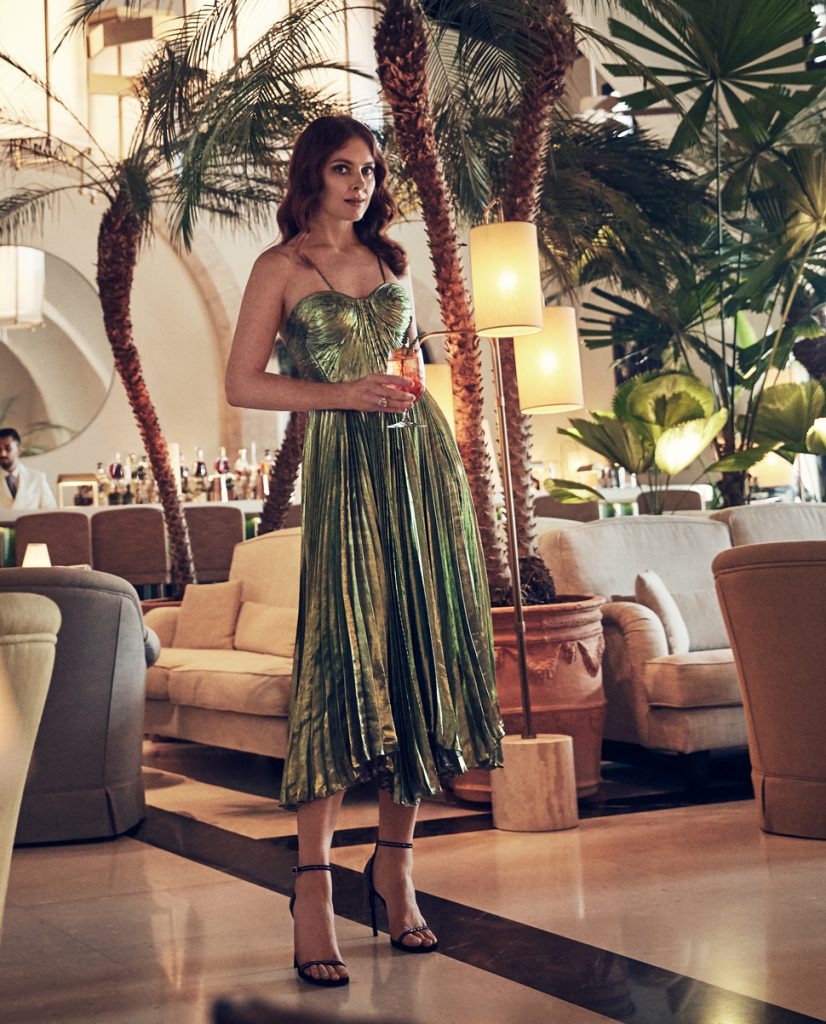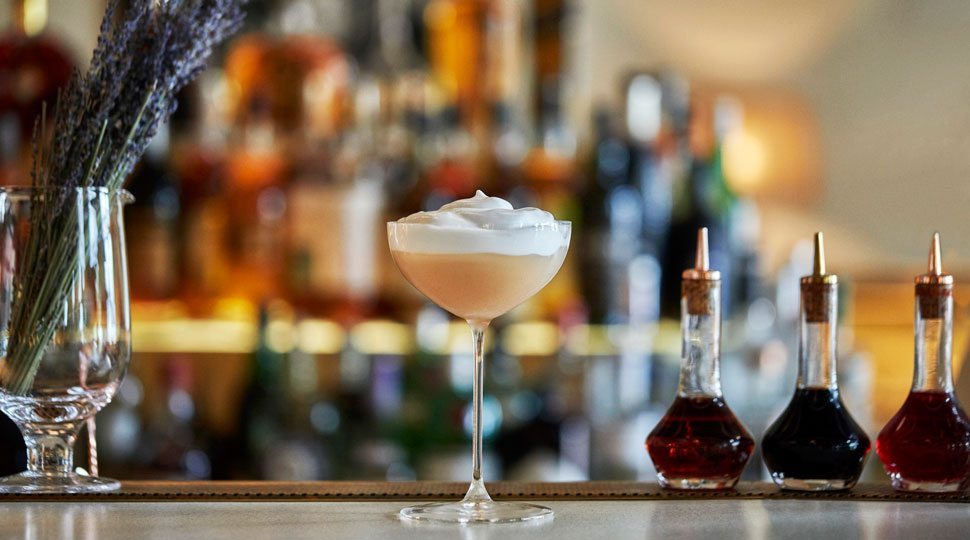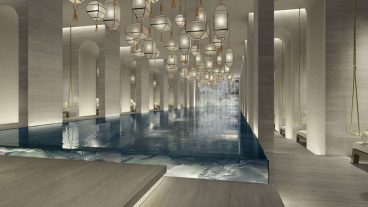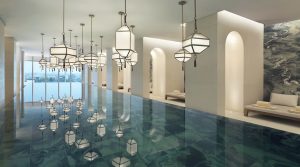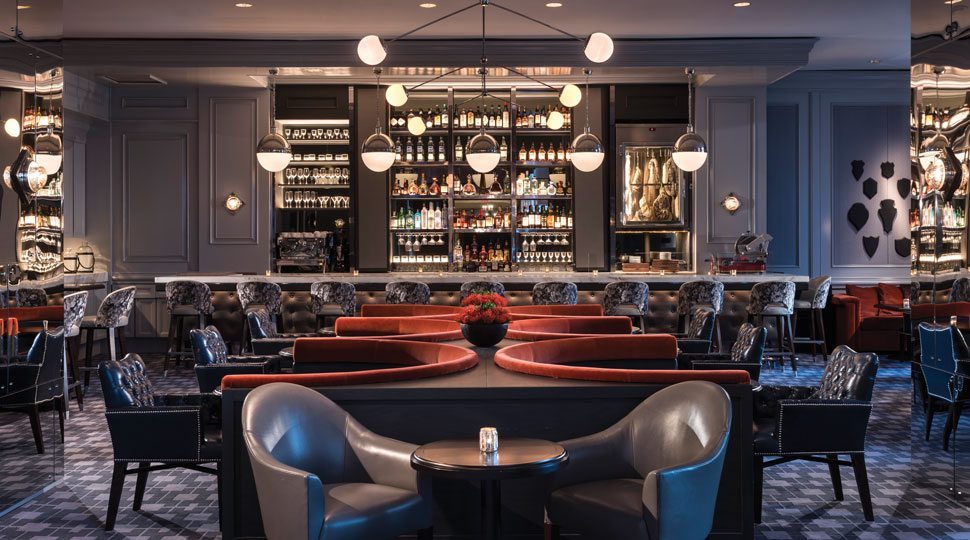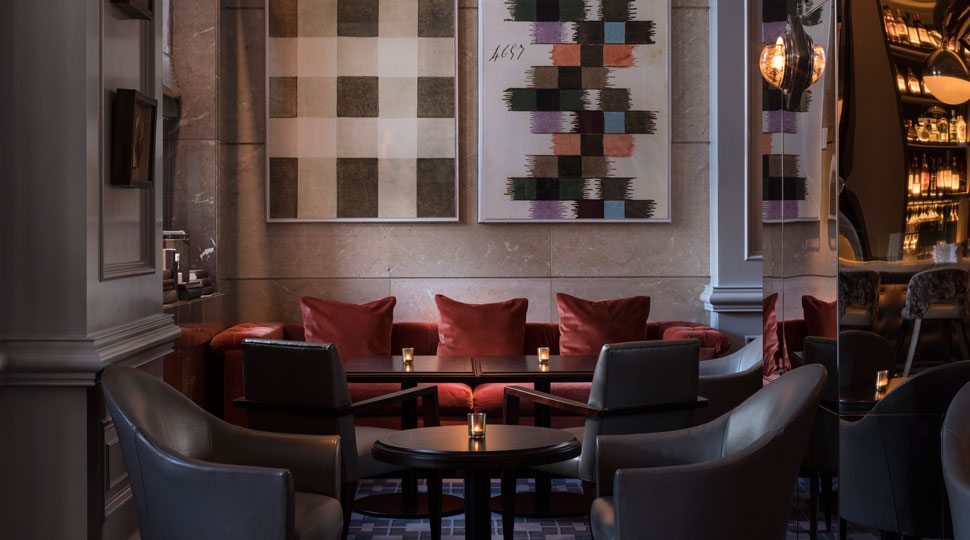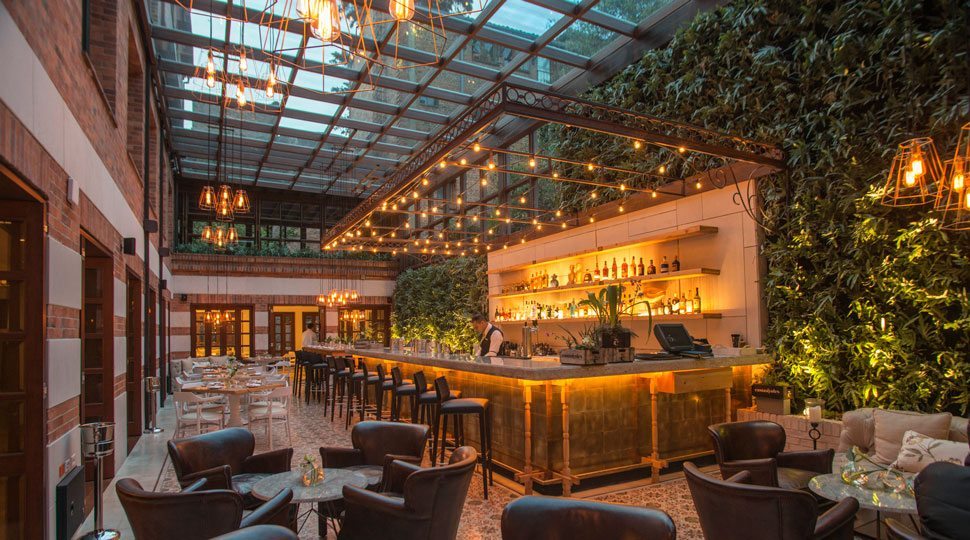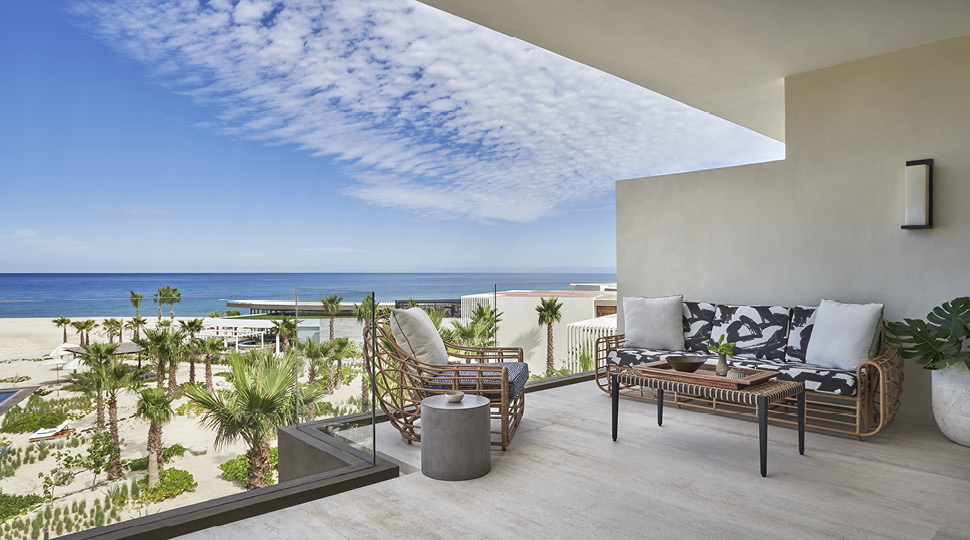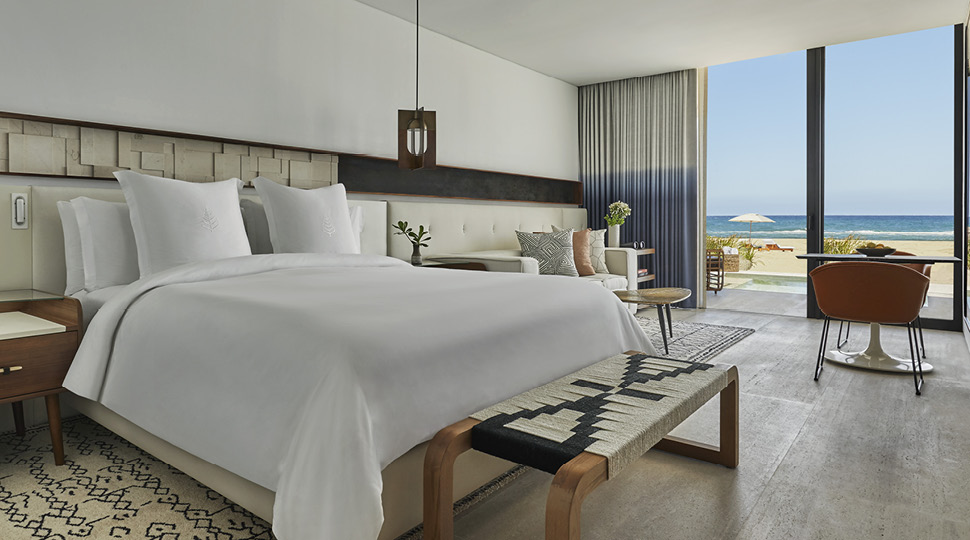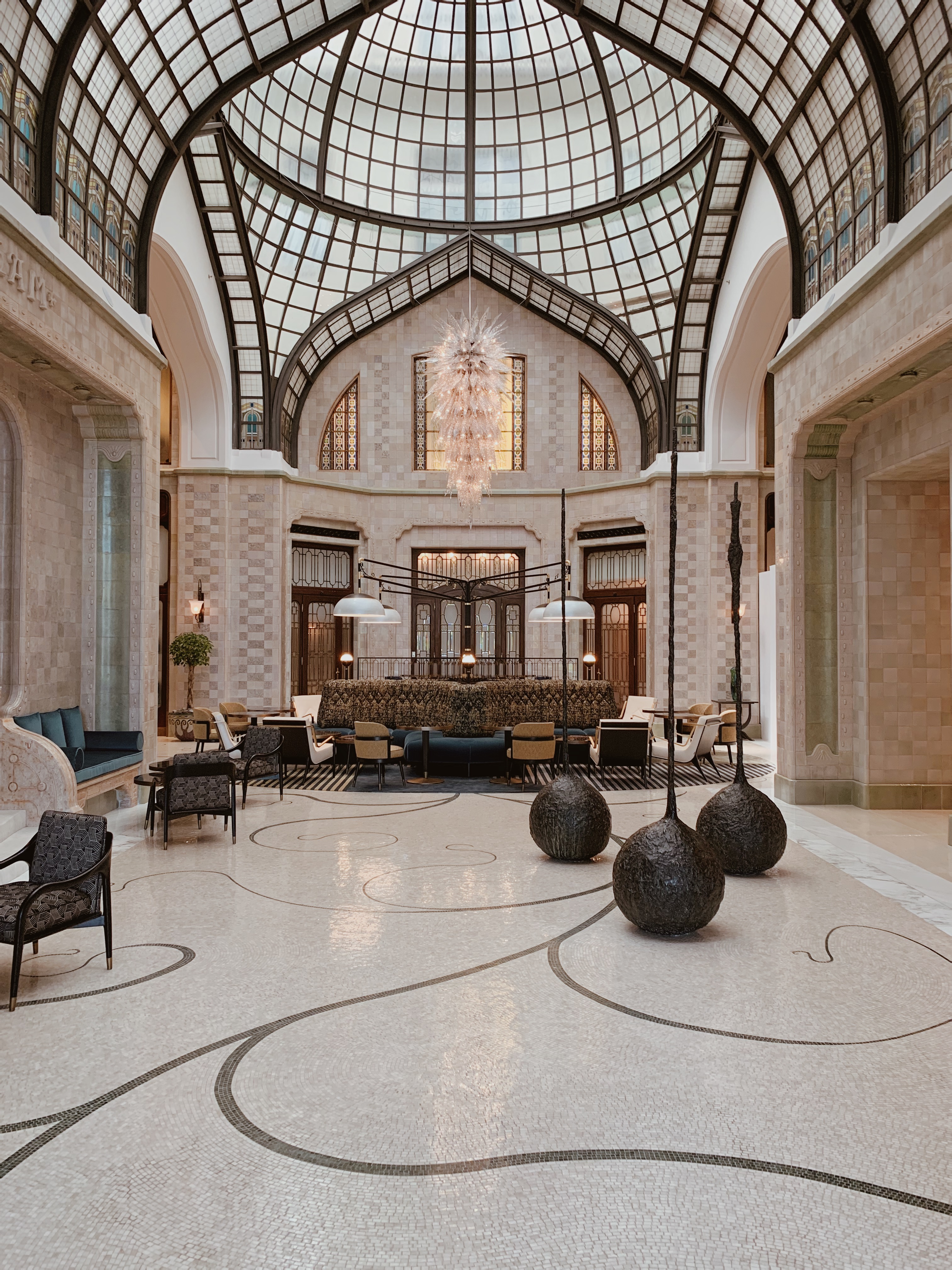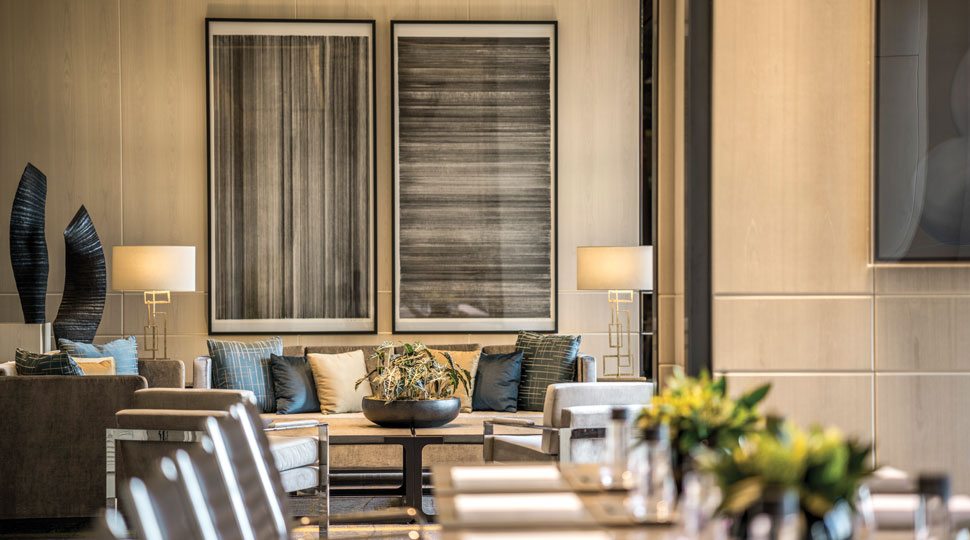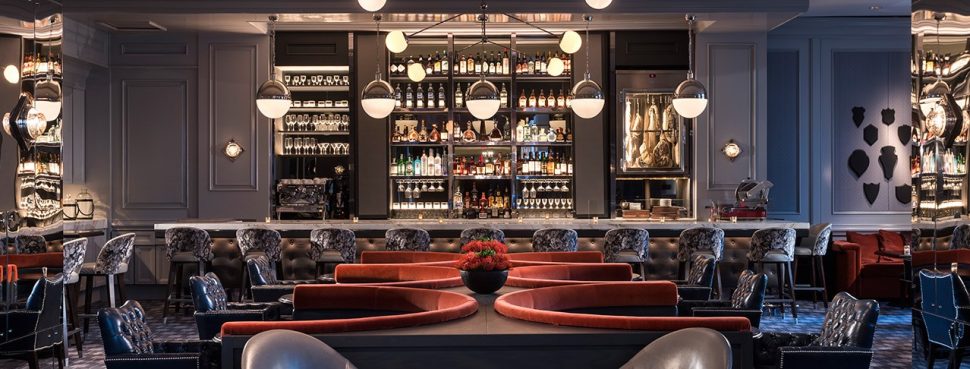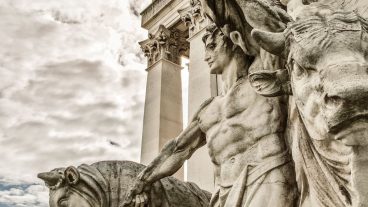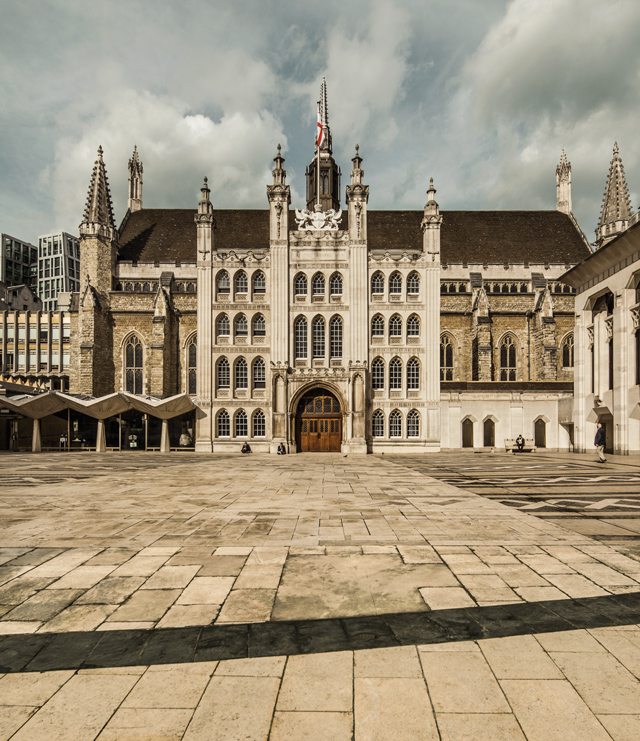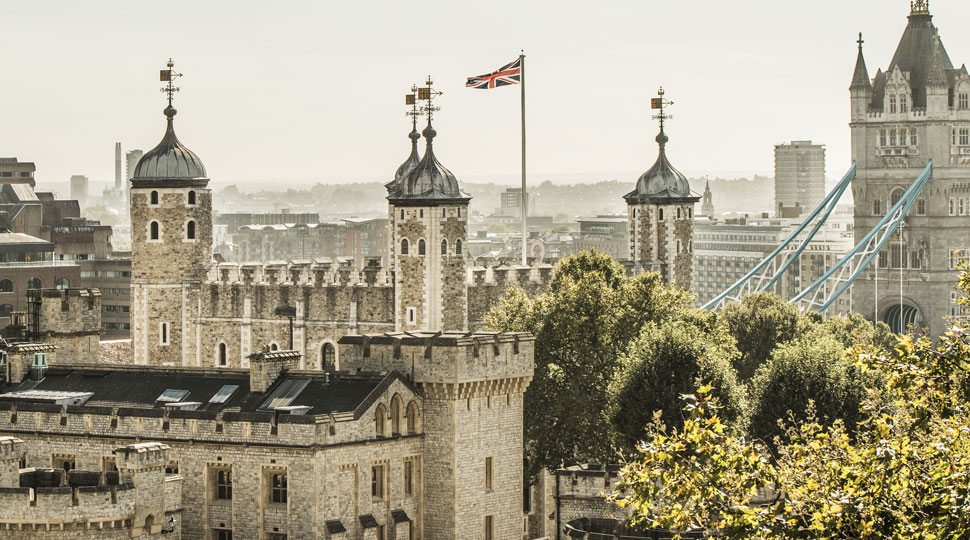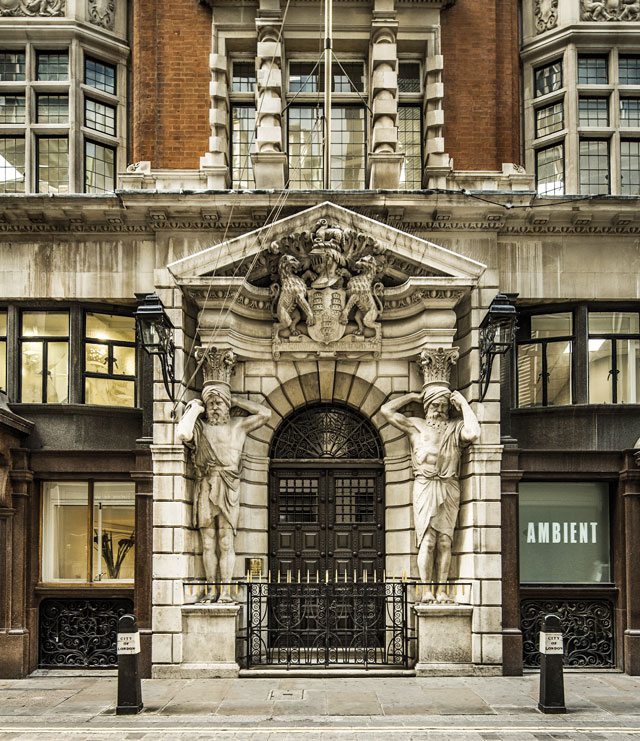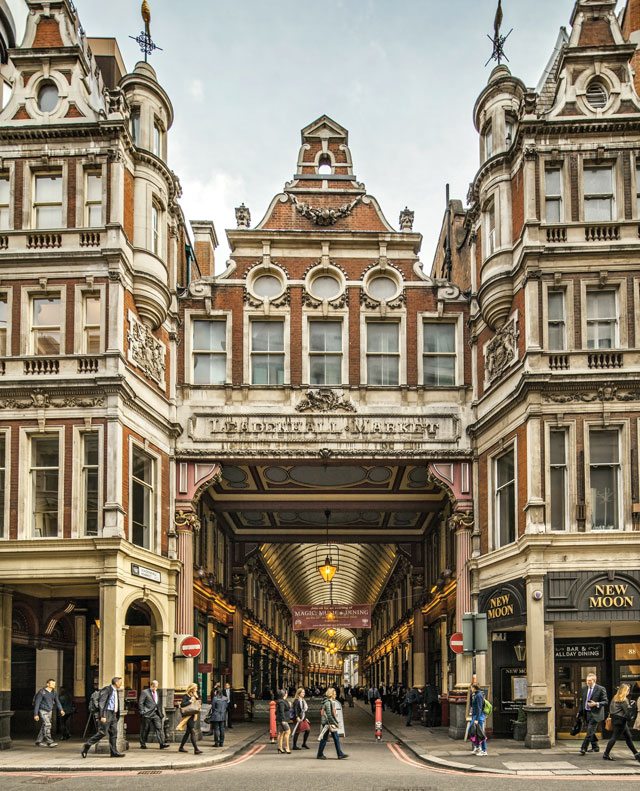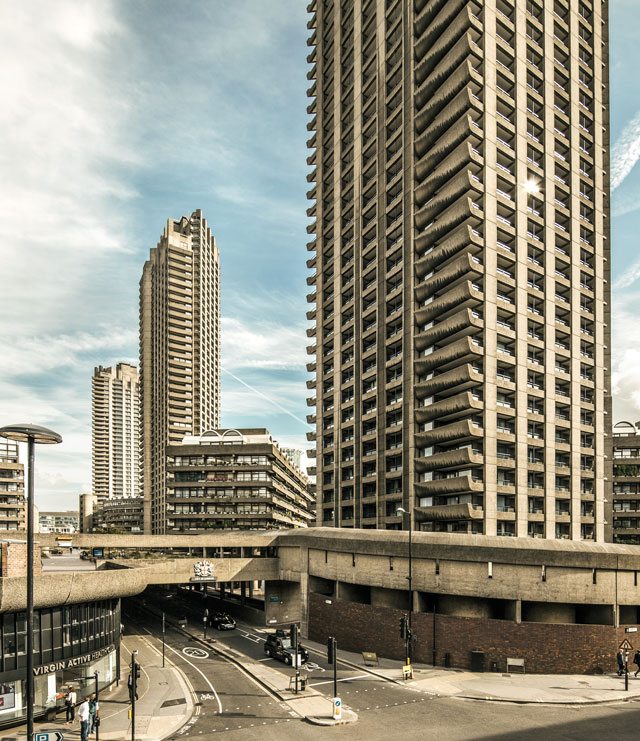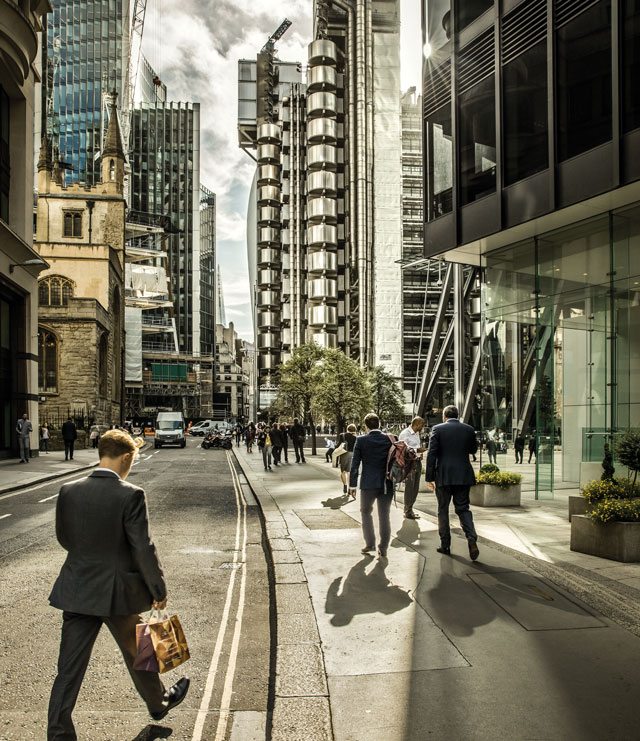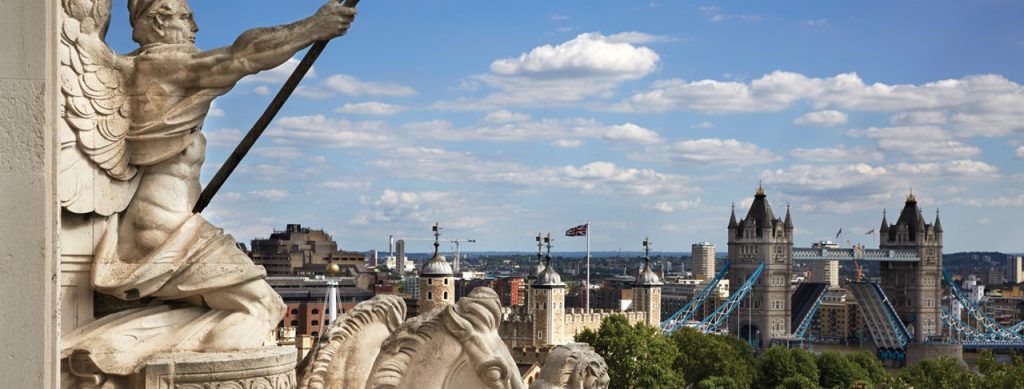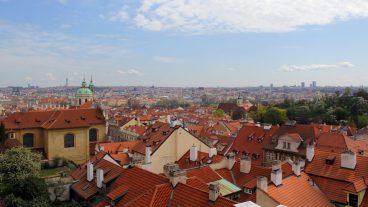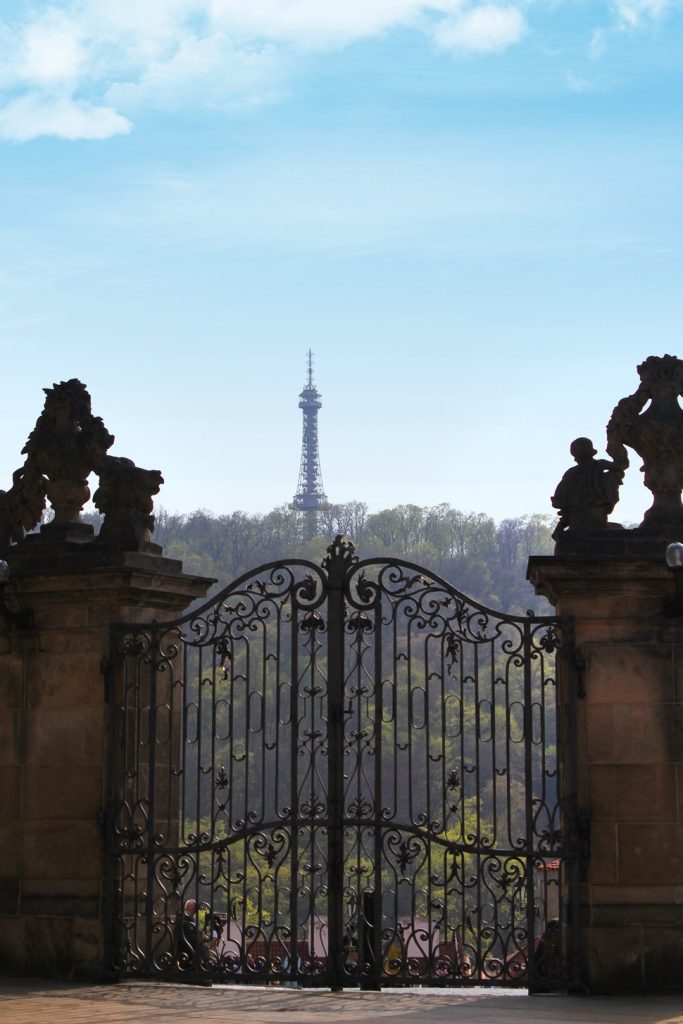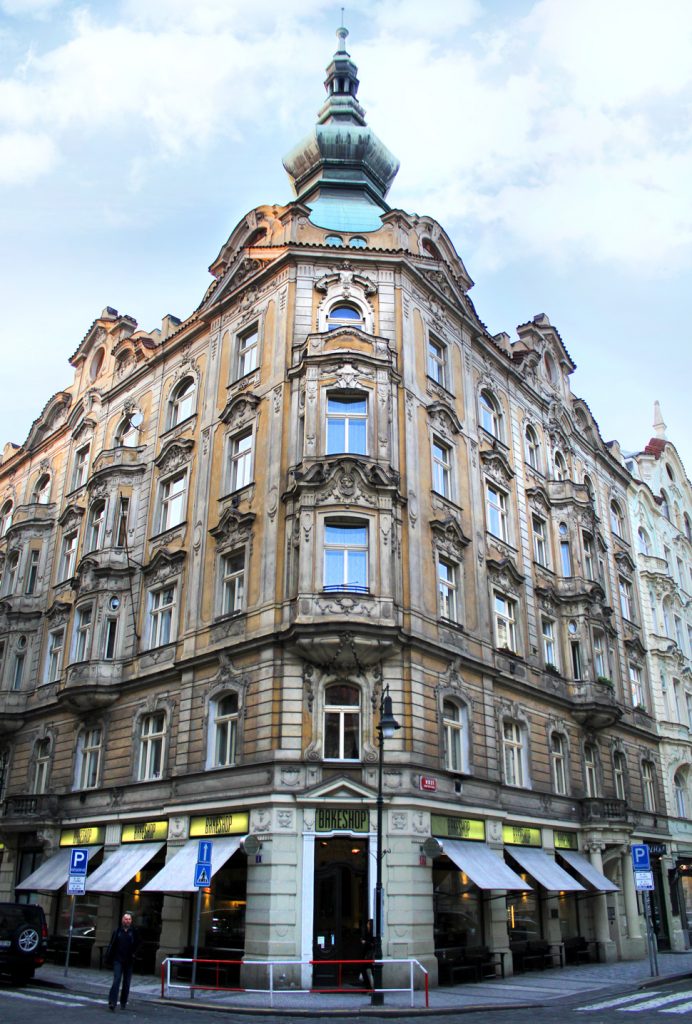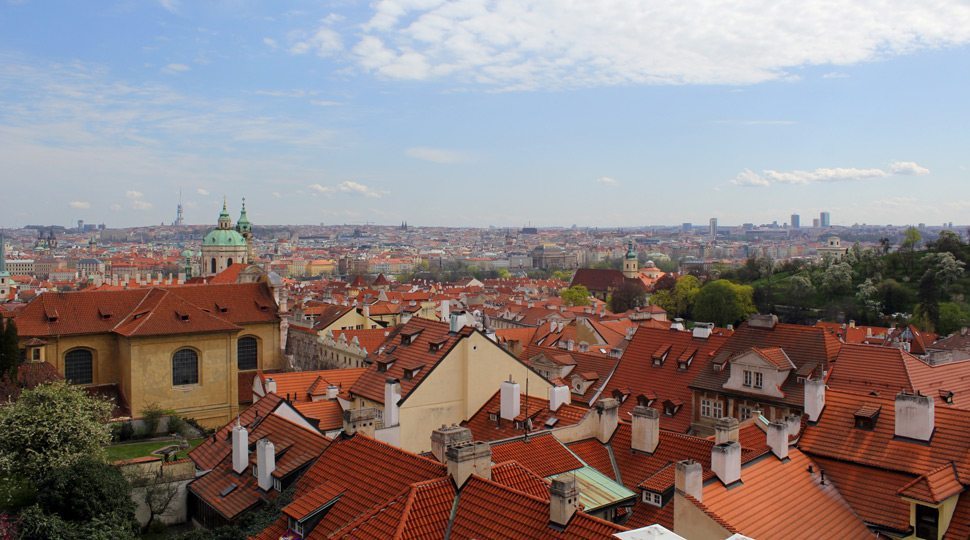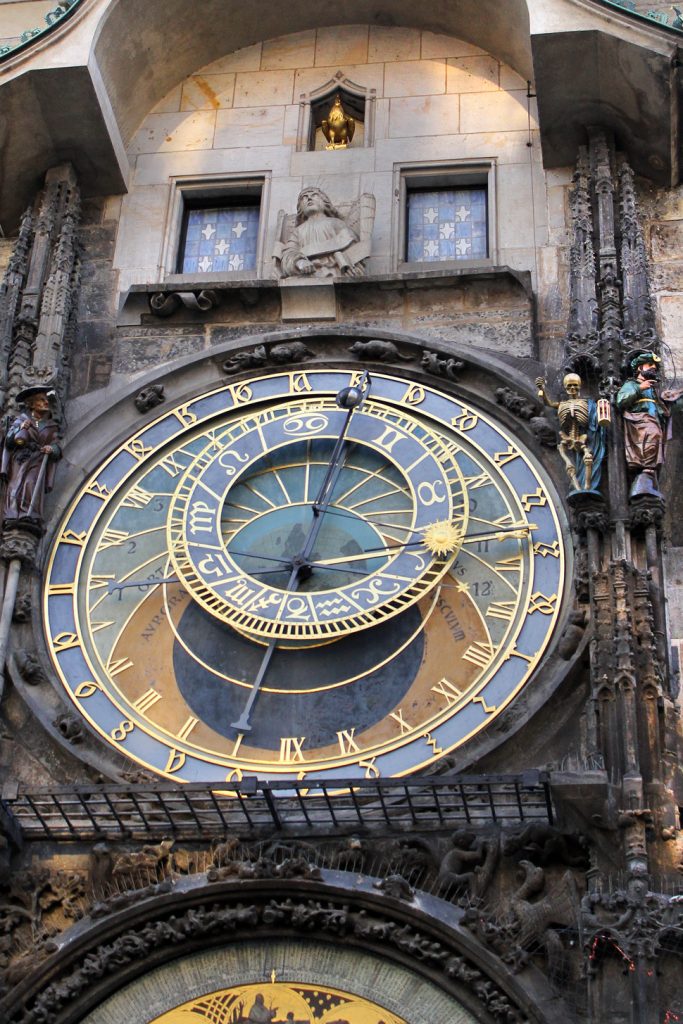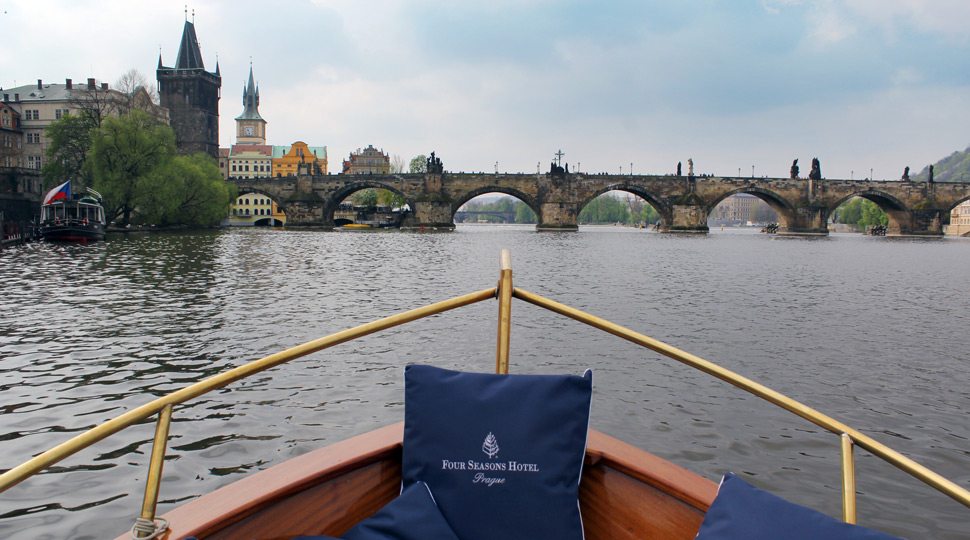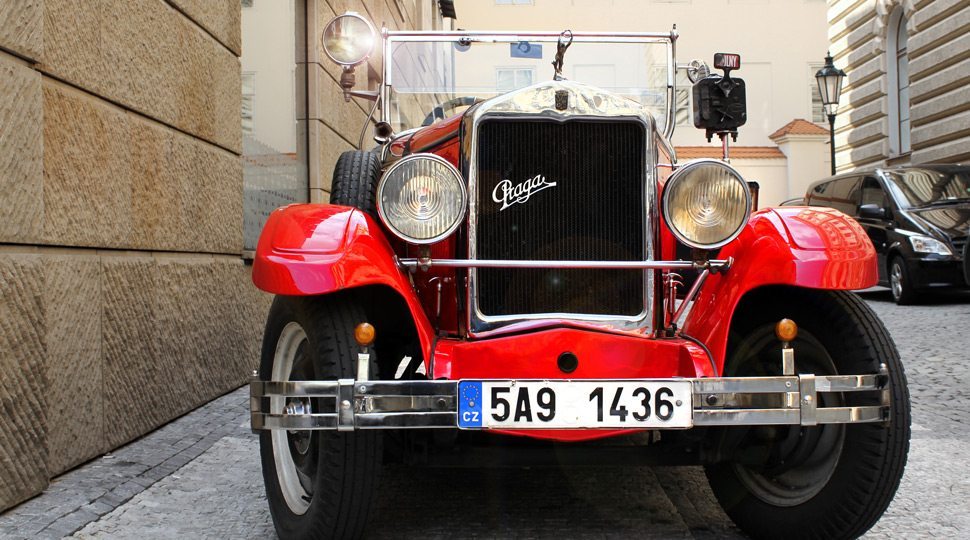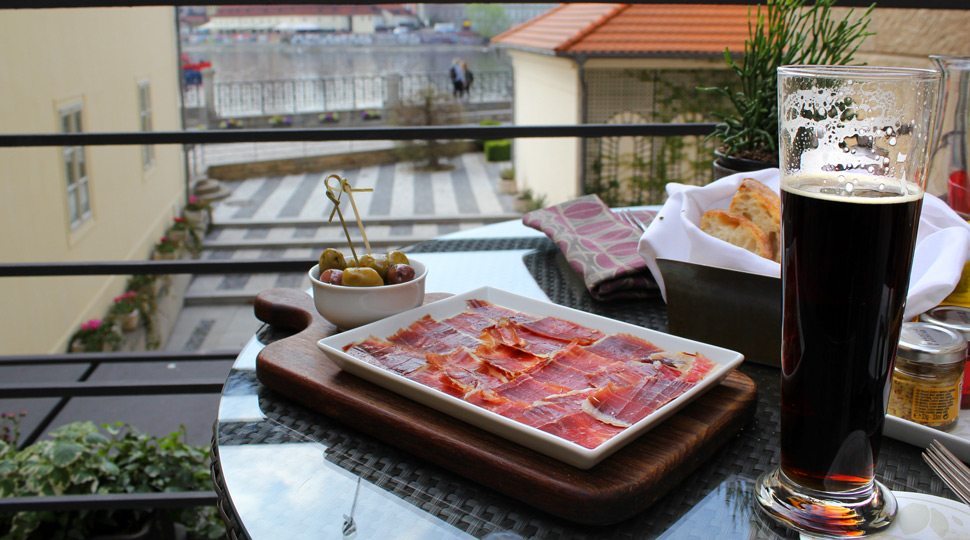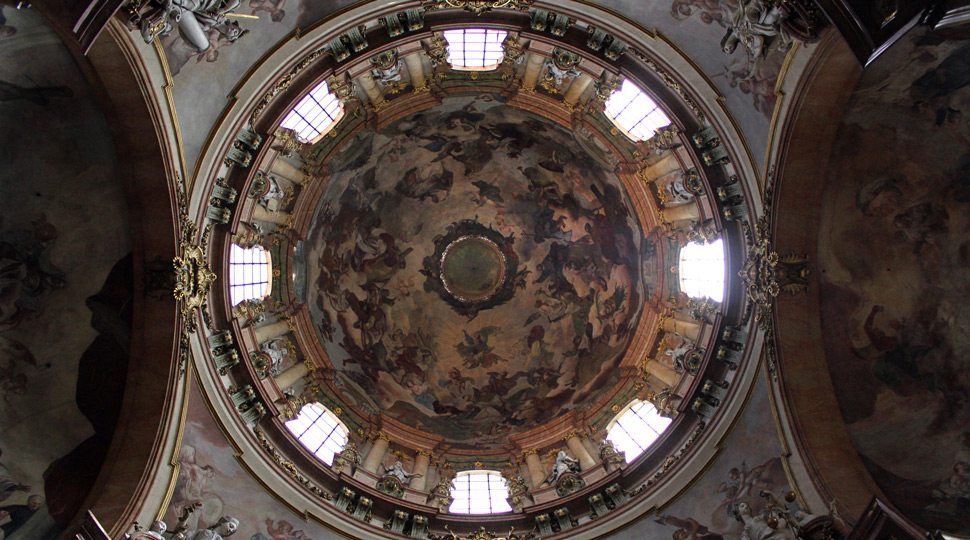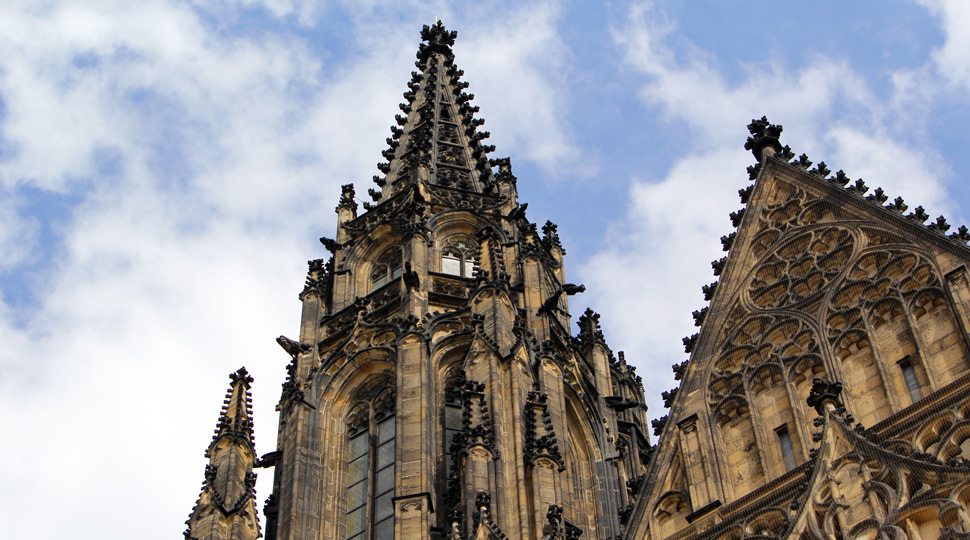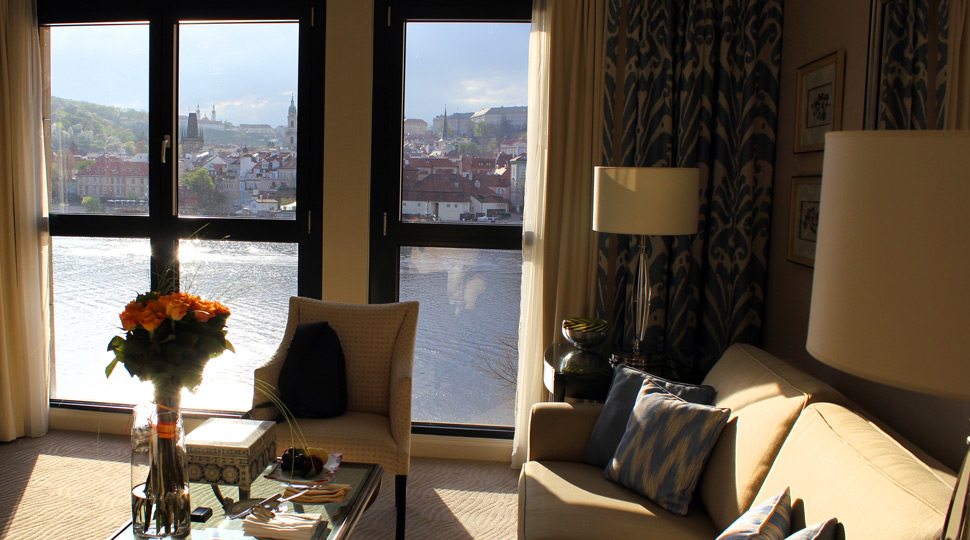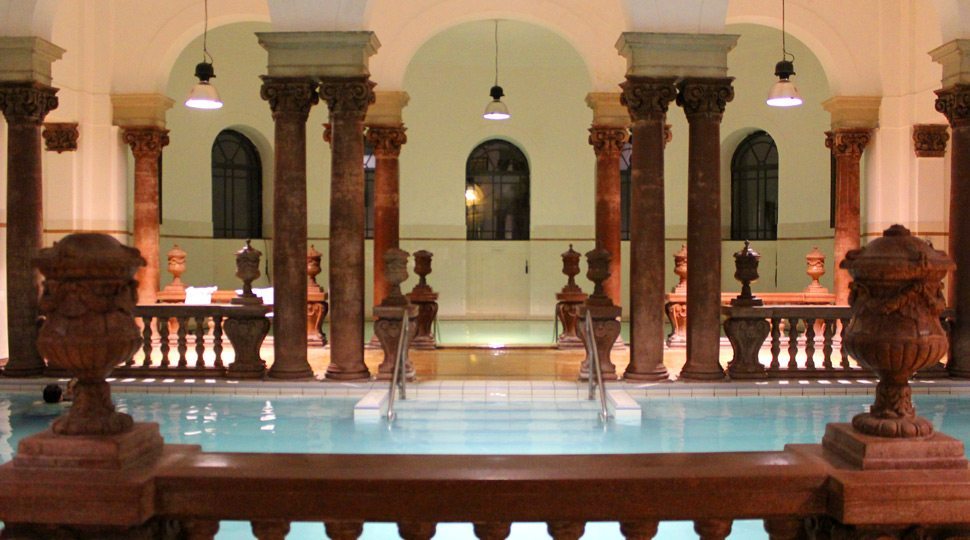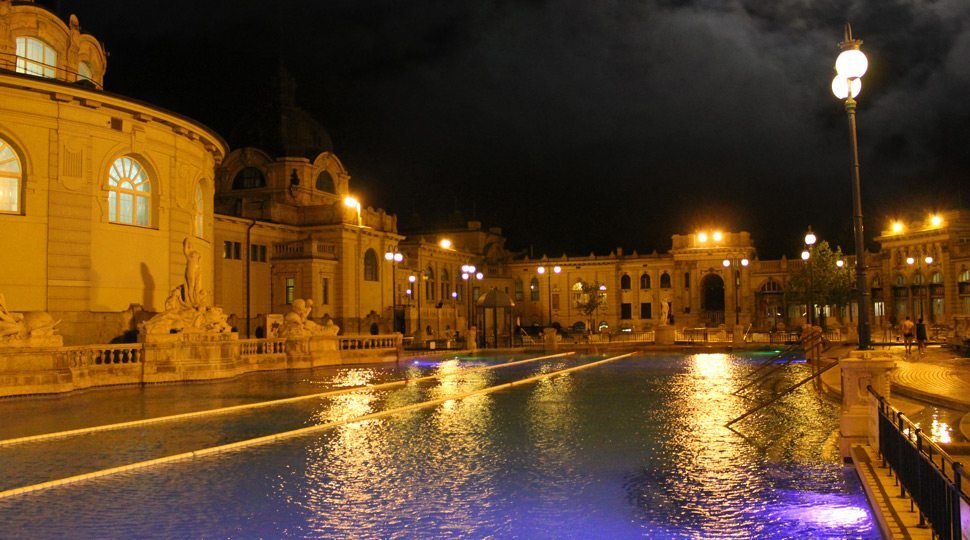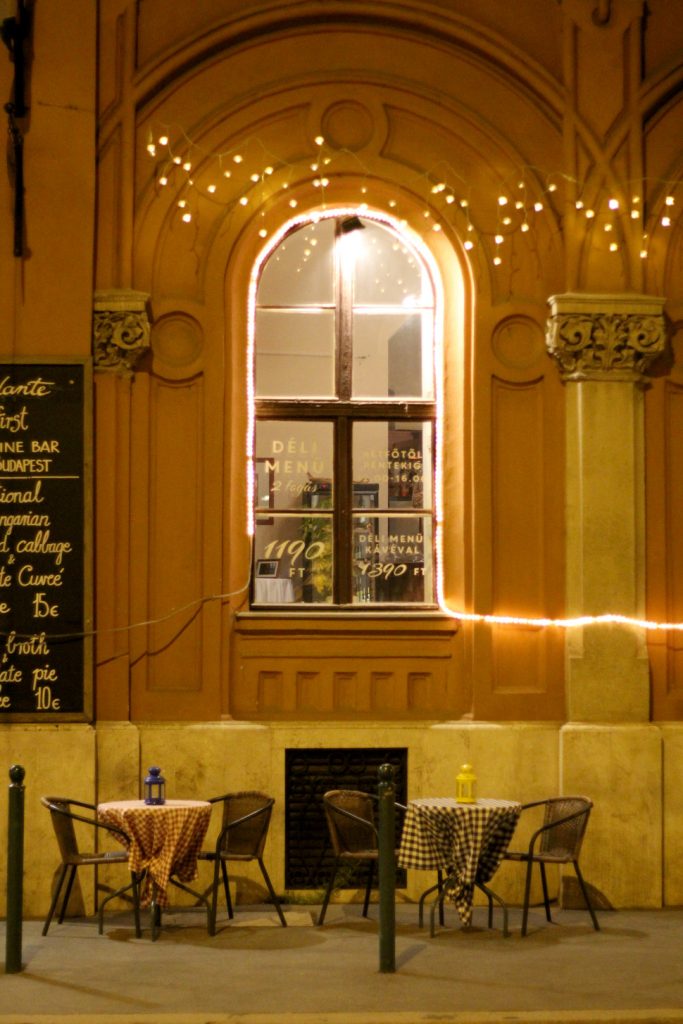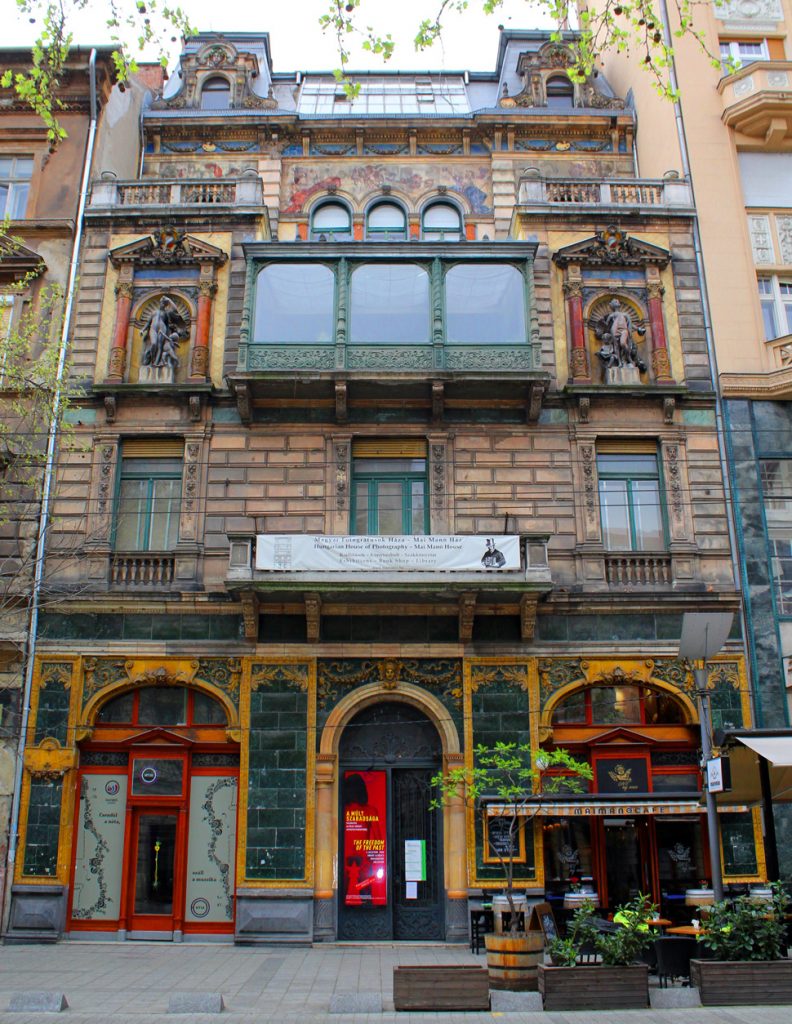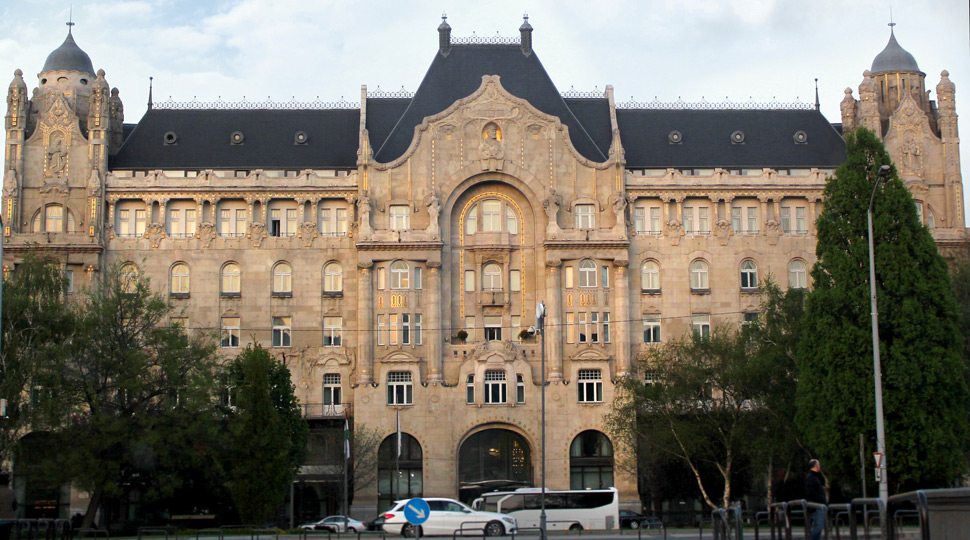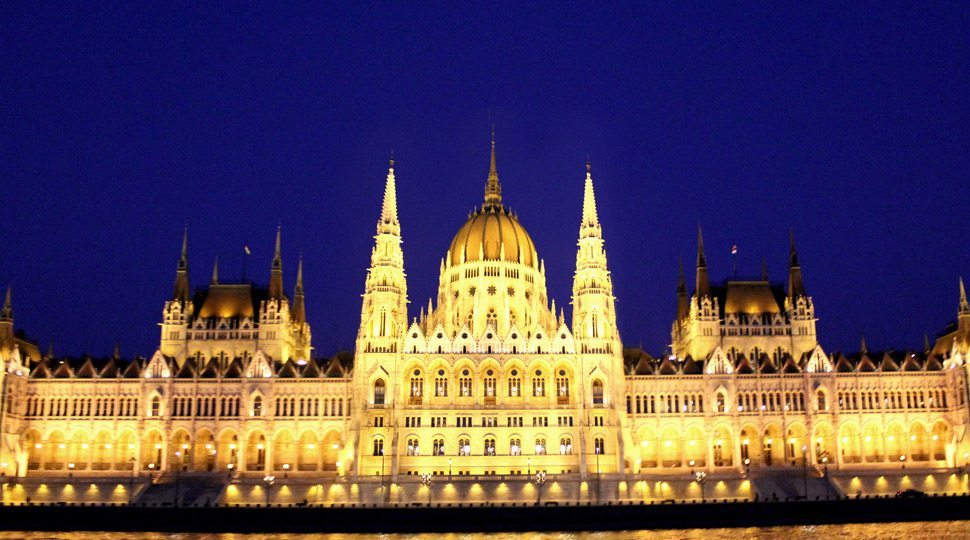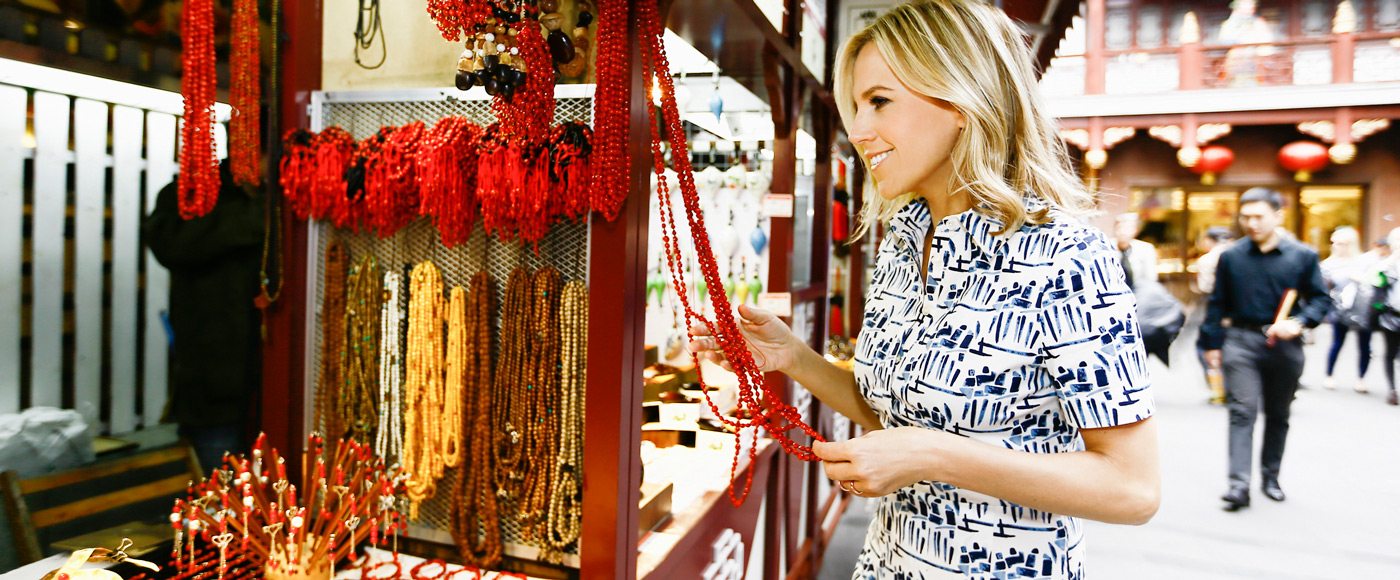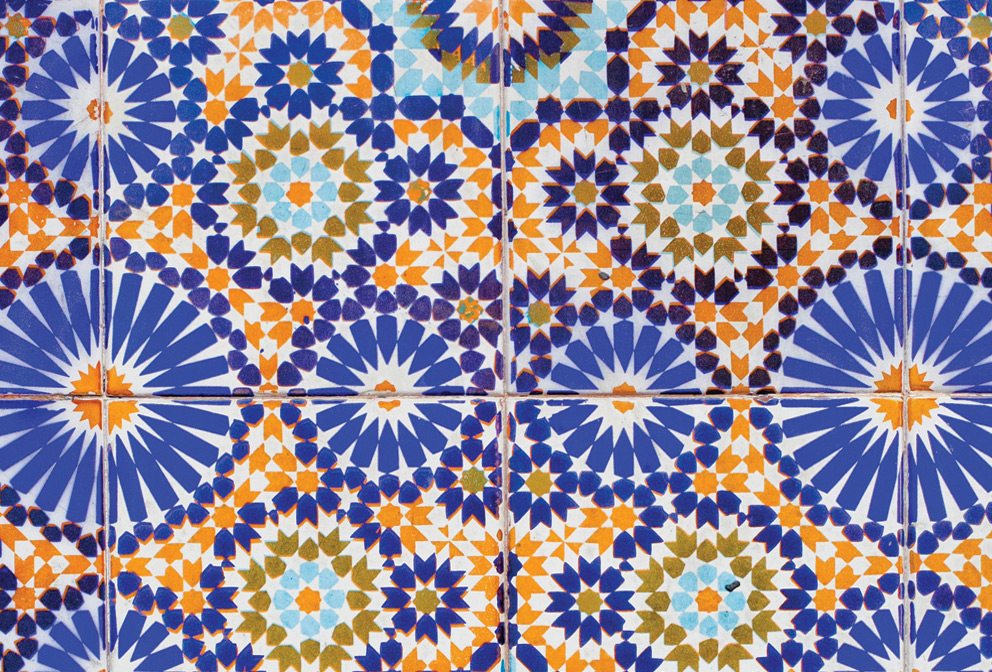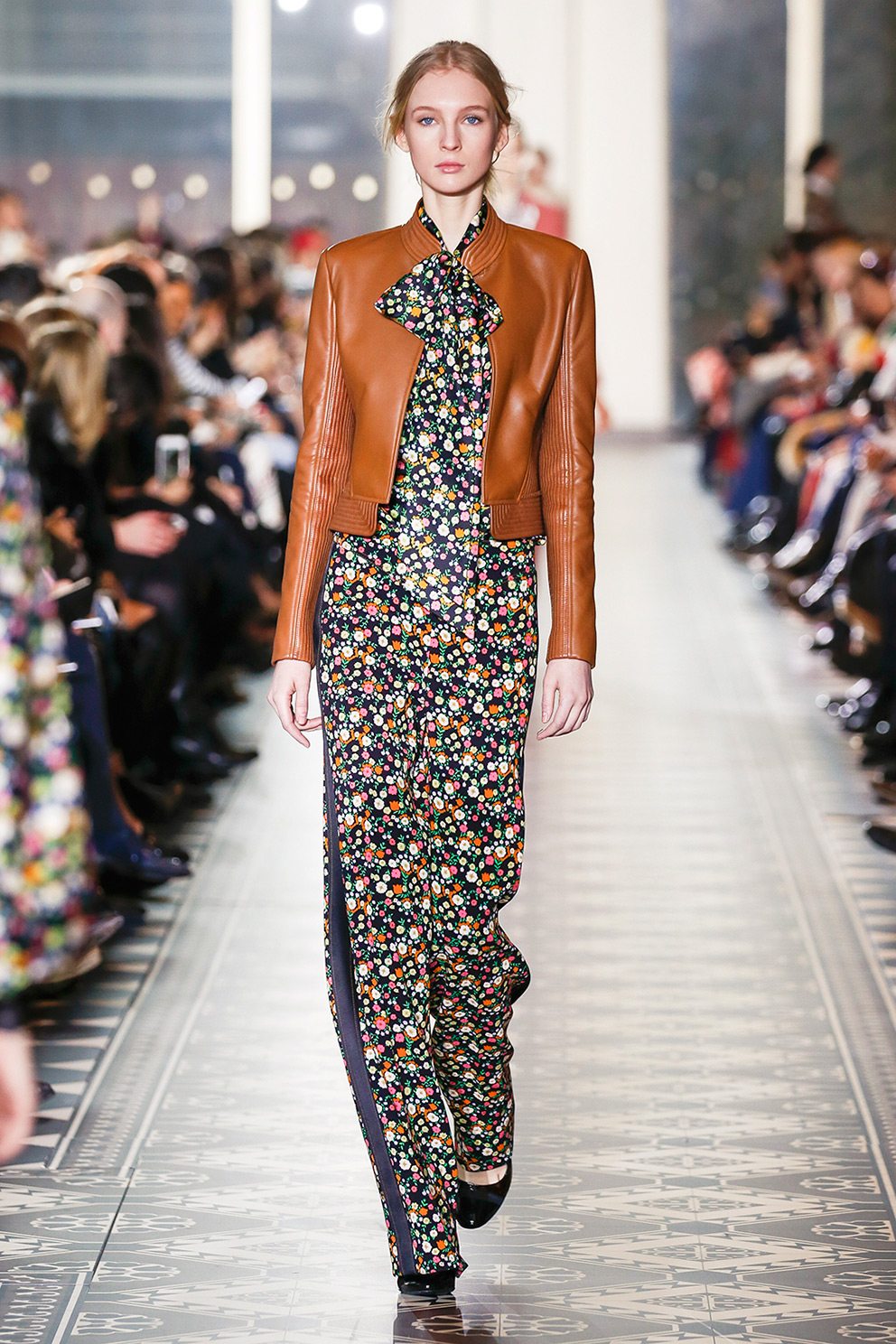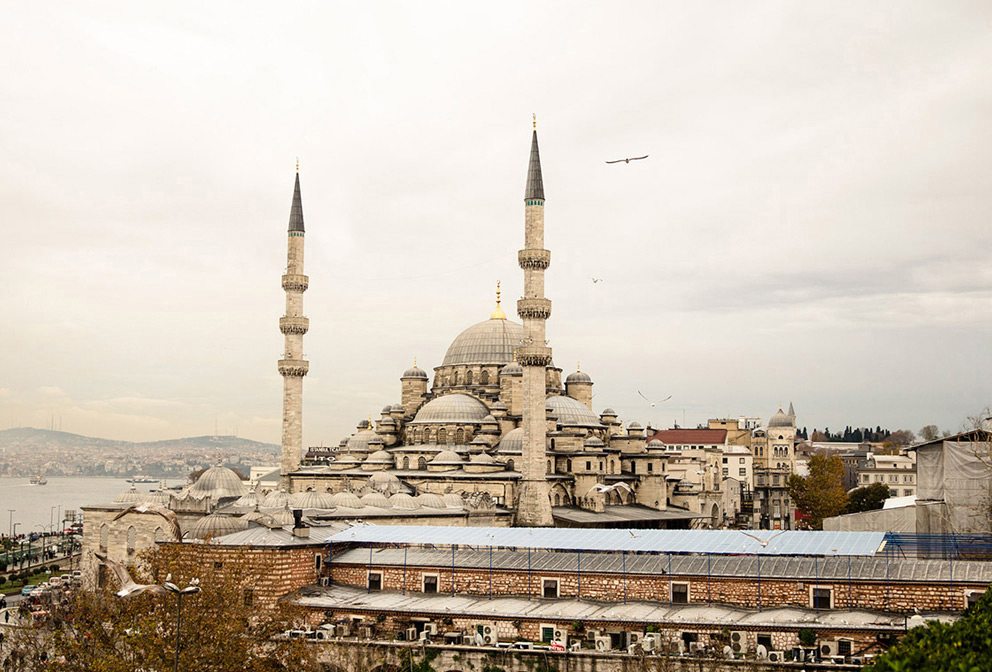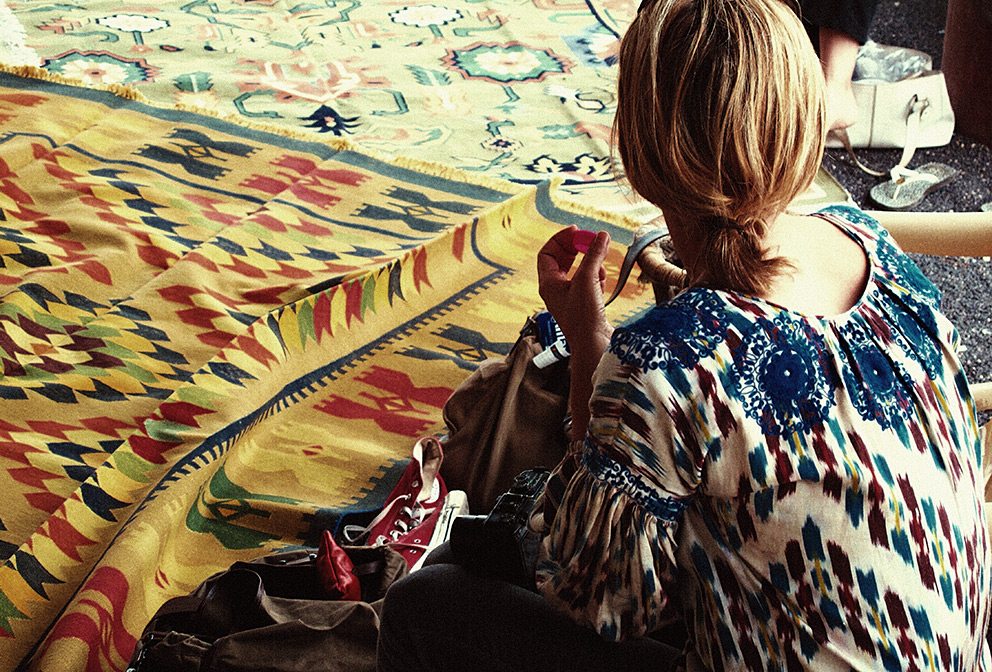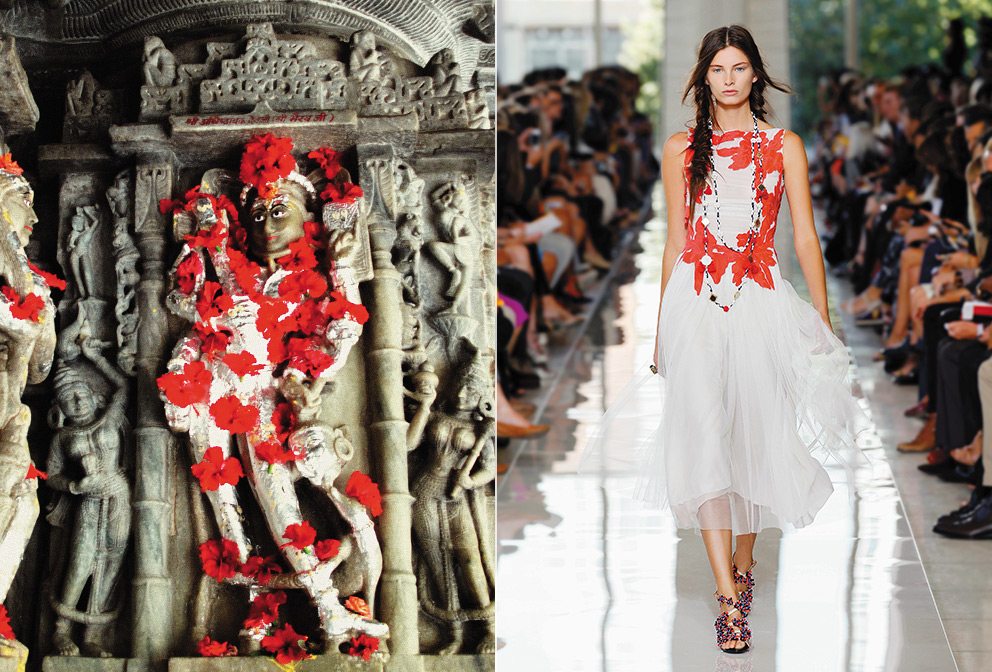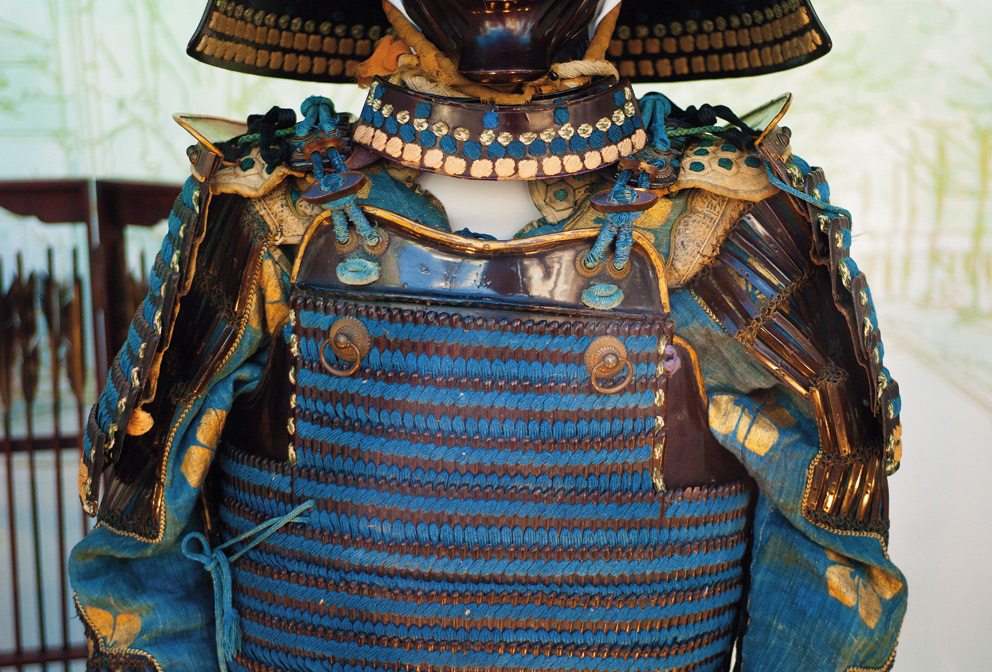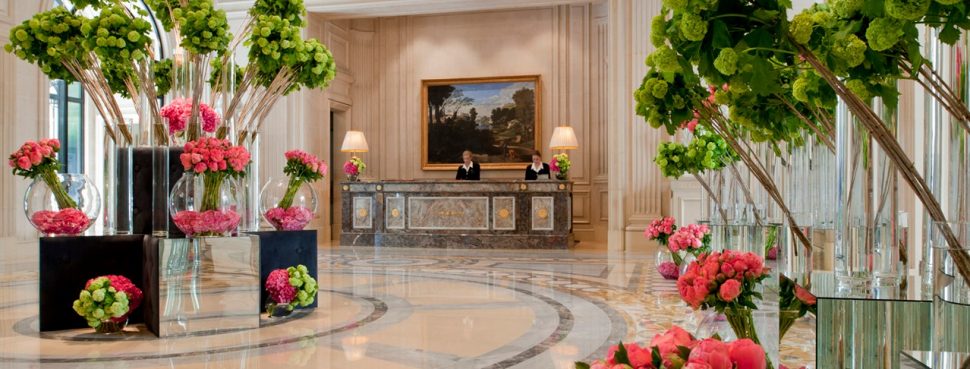Miami is a town that proudly celebrates its past and present, and often combines the two — stroll along Ocean Drive and you’ll find cutting-edge restaurants and contemporary boutiques housed in Art Deco marvels. This season,
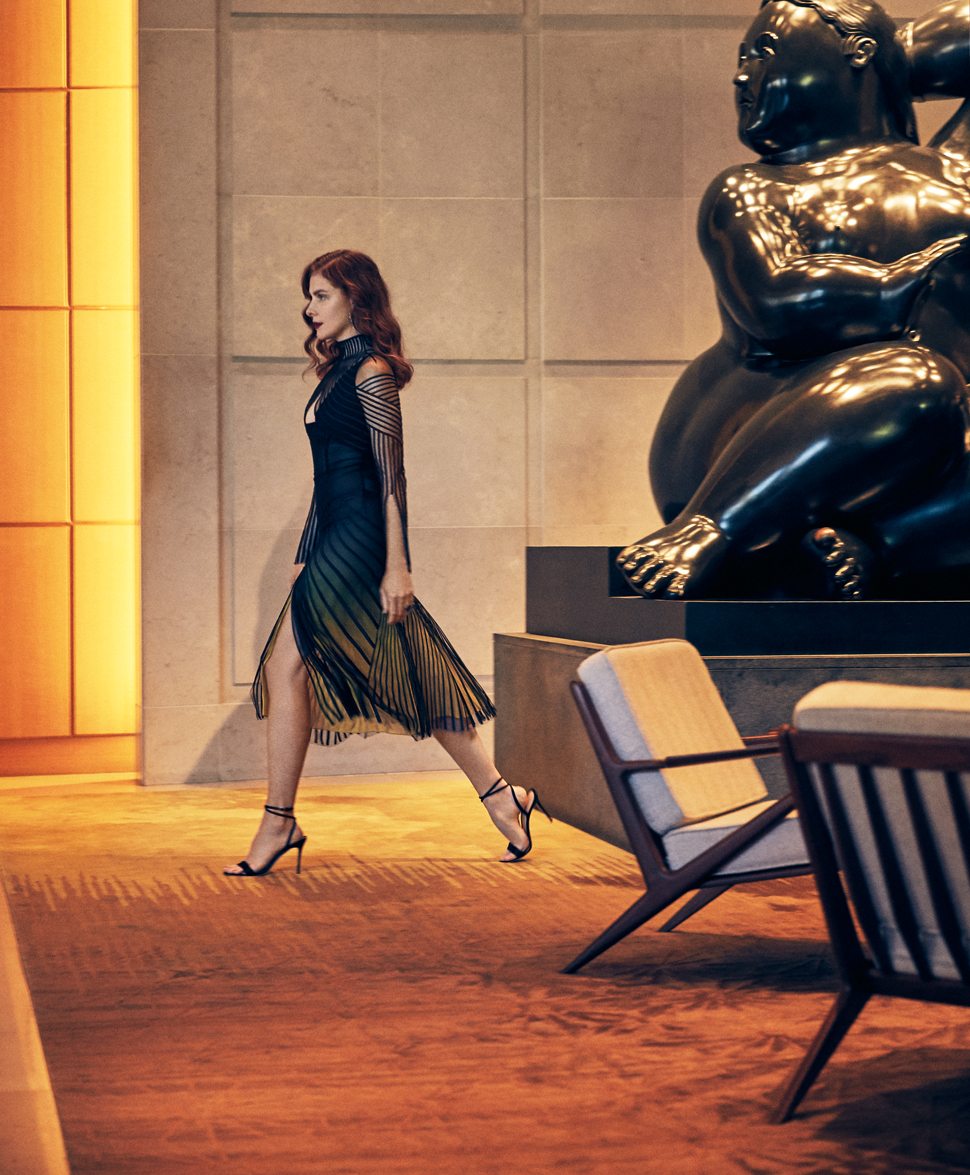
The Hotel’s extensive art collection highlights Miami’s rich blend of cultures. The most iconic pieces: three bronze sculptures by Colombian artist Fernando Botero.
Lounge by the Palm Grove pool or splash into the Hotel’s heated main pool. Luxury cabanas and poolside fare are also available at both.
Hammocks are positioned just above the water’s surface at the Palm Grove Pool at Four Seasons Hotel Miami.
Two towering nudes, Adam and Eve, welcome guests entering Four Seasons Miami. Each stands roughly 4 metres (12 feet). Artist Fernando Botero’s work is a testament to Miami’s nearly 1,000 Art Deco buildings.
A two-acre urban terrace oasis, inspired by the lush Floridian landscape, invites relaxation beside the Hotel’s two resort-style pools.
Cashmere turtleneck sweater, wool lurex cable knit sweater, and wool metallic wide-leg pant with cuffed hem, all by Max Mara; 18-karat gold Acacia diamond earrings by Narcisa Pheres; 18-karat Honey Gold ring (on left hand) with vanilla diamonds by Le Vian; 14-karat gold diamond ring (on right hand) by EFFY Jewelry; Rosy sunglasses by Jimmy Choo.
Tap or click a photo to launch slideshow
Lounge by the Palm Grove pool or splash into the Hotel’s heated main pool. Luxury cabanas and poolside fare are also available at both.
The sleek urban feel of the Hotel’s architecture, a glass-and-steel tower that rises above the Brickell skyline, is reflected in the Frank-Nicholson-designed lobby.
Velvet dress, suede gloves and F wedge bootie, all by Salvatore Ferragamo; rose gold diamond bracelet by Jason of Beverly Hills; 14-karat rose gold earrings with diamonds, black opal and tourmaline by Dana Rebecca Designs.
Hammocks are positioned just above the water’s surface at the Palm Grove Pool at Four Seasons Hotel Miami.
Two towering nudes, Adam and Eve, welcome guests entering Four Seasons Miami. Each stands roughly 4 metres (12 feet). Artist Fernando Botero’s work is a testament to Miami’s nearly 1,000 Art Deco buildings.
At EDGE, Steak & Bar, prime cuts are paired with seasonal fruits and vegetables.
A two-acre urban terrace oasis, inspired by the lush Floridian landscape, invites relaxation beside the Hotel’s two resort-style pools.
Cashmere turtleneck sweater, wool lurex cable knit sweater, and wool metallic wide-leg pant with cuffed hem, all by Max Mara; 18-karat gold Acacia diamond earrings by Narcisa Pheres; 18-karat Honey Gold ring (on left hand) with vanilla diamonds by Le Vian; 14-karat gold diamond ring (on right hand) by EFFY Jewelry; Rosy sunglasses by Jimmy Choo.
Four Seasons Hotel Miami
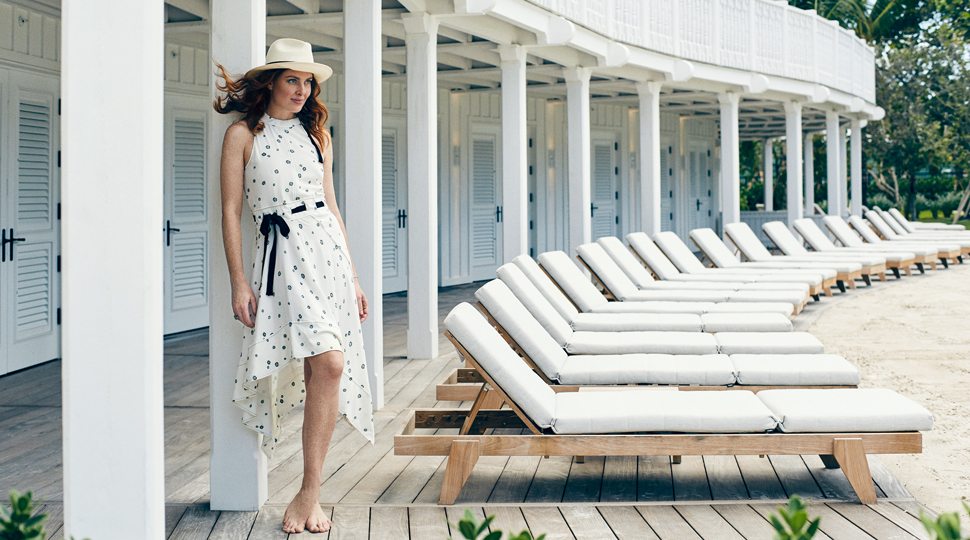
The Hotel’s Cabana Row was Winston Churchill’s favourite spot to paint seascapes and sip cocktails. Read more about the Surf Club’s legendary past here.
Open sunrise to sunset, three pristine pools at the Hotel are surrounded by coconut palms and sea grape trees.
The Quiet Pool serenity lawn, by landscape designer Fernando Wong, showcases some of the Hotel’s 240 palm trees.
Nero and mink dress and dark calvados and nero karung belt by Bottega Veneta; 18-karat rose gold bangle with diamonds and black jade by Roberto Coin; 18-karat rose gold bangle with diamonds and black jade by Roberto Coin; 18-karat gold wrap necklace and 18-karat gold graduated link necklace by Tiffany & Co. and available at Bal Harbour Shops.
Custom designed by Joseph Dirand, Le Sirenuse Miami allows you to dine indoors among elegant palm trees or with an ocean view on the outdoor terrace.
Tap or click a photo to launch slideshow
Peacock Alley, in the historical Russell Pancoast-designed Surf Club, features portraits of the Hotel’s famous guests.
Organza top by Cheng; rose crêpe-backed palazzo pants by Victoria Hayes; diamond Cascading Drop necklace in platinum and Marquise Cluster diamond and platinum bracelet by Harry Winston.
Open sunrise to sunset, three pristine pools at the Hotel are surrounded by coconut palms and sea grape trees.
The Quiet Pool serenity lawn, by landscape designer Fernando Wong, showcases some of the Hotel’s 240 palm trees.
Nero and mink dress and dark calvados and nero karung belt by Bottega Veneta; 18-karat rose gold bangle with diamonds and black jade by Roberto Coin; 18-karat rose gold bangle with diamonds and black jade by Roberto Coin; 18-karat gold wrap necklace and 18-karat gold graduated link necklace by Tiffany & Co. and available at Bal Harbour Shops.
Custom designed by Joseph Dirand, Le Sirenuse Miami allows you to dine indoors among elegant palm trees or with an ocean view on the outdoor terrace.
Located in the original 1930s clubhouse where some of the 20th century’s most talked-about parties were held, Le Sirenuse Champagne Bar serves Miami’s largest selection of fine champagnes.
Model Taylor wears a silk chiffon dress from Romanian designer Maria Lucia Hohan.
A current favourite at Le Sirenuse Champagne Bar: the Duke and Duchess of Windsor, which is from the Hotel’s menu of champagne cocktails dedicated to historic guests of the Surf Club. This particular drink is created with Ca’ Bolani, roasted peach nectar and elderflower foam.
Four Seasons Hotel at The Surf Club
Digital Operator: Christopher Morel
Lighting Assistant: Nicolas Stipcianos
Stylist: Cannon
Market Assistant: Alexandra Lynn
Stylist Assistant: Kelley Harris
Model: Taylor Foster at Front Management
YOUR JOURNEY BEGINS HERE
From Brickell to the beach, Miami is yours to explore.
